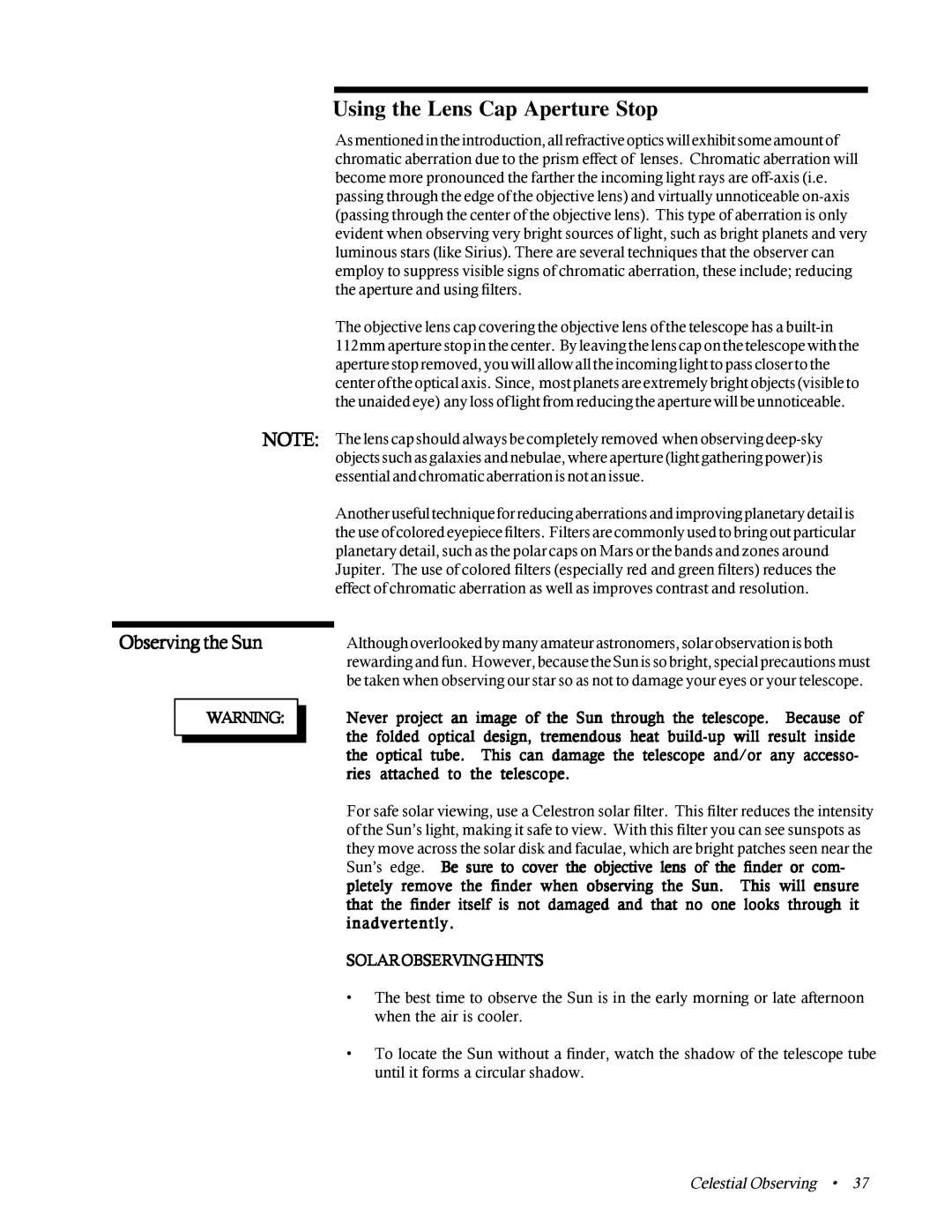
Using the Lens Cap Aperture Stop
NOTE:
Observing the Sun
Asmentionedintheintroduction,allrefractiveopticswillexhibitsomeamountof chromatic aberration due to the prism effect of lenses. Chromatic aberration will become more pronounced the farther the incoming light rays are
The objective lens cap covering the objective lens of the telescope has a
The lens cap should always be completely removed when observing
Another useful technique for reducing aberrations and improving planetary detail is the use of colored eyepiece filters. Filters are commonly used to bring out particular planetary detail, such as the polar caps on Mars or the bands and zones around Jupiter. The use of colored filters (especially red and green filters) reduces the effect of chromatic aberration as well as improves contrast and resolution.
Although overlooked by many amateur astronomers, solar observation is both rewarding and fun. However, because the Sun is so bright, special precautions must be taken when observing our star so as not to damage your eyes or your telescope.
WARNING:
Never project an image of the Sun through the telescope. Because of the folded optical design, tremendous heat
For safe solar viewing, use a Celestron solar filter. This filter reduces the intensity of the Sun’s light, making it safe to view. With this filter you can see sunspots as they move across the solar disk and faculae, which are bright patches seen near the Sun’s edge. Be sure to cover the objective lens of the finder or com- pletely remove the finder when observing the Sun. This will ensure that the finder itself is not damaged and that no one looks through it inadvertently.
SOLAROBSERVINGHINTS
•The best time to observe the Sun is in the early morning or late afternoon when the air is cooler.
•To locate the Sun without a finder, watch the shadow of the telescope tube until it forms a circular shadow.
